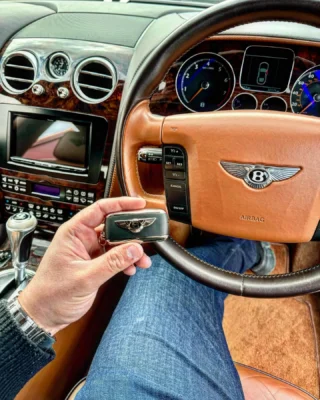Comprehensive Guide to Car Door Lock Repair: Troubleshooting and Solutions
The stability and performance of a vehicle's door locks are important for both the security of the car and the safety of its residents. Car door locks can experience a range of concerns, varying from minor mechanical problems to finish failures. This short article seeks to supply an informative introduction of car door lock repair, detailing typical problems, diagnostic procedures, and solutions.
Comprehending Car Door Locks
Before diving into repair procedures, it is essential to comprehend the components of a common car door lock. There are 2 main types of locks: mechanical and electronic.
Parts of a Car Door Lock System
- Lock Cylinder: The part where the key is inserted.
- Latches: Mechanisms that hold the door shut.
- Actuator: Electric motor in electronic locks that helps in locking and opening.
- Linkage: Connects the lock cylinder to the lock.
- Remote Key Fob: In electronic systems, this is utilized to lock and unlock the doors from a range.
Common Issues with Car Door Locks
Car door locks can stop working for a plethora of reasons. Here are some typical issues experienced by vehicle owners:
- Sticking or Frozen Locks: Especially in cold weather, locks can end up being challenging to run.
- Lock Not Engaging or Disengaging: Both mechanical and electronic locks can face concerns where they do not react to the key or remote.
- Key Jams: The key might get stuck in the lock, making it impossible to lock or unlock the door.
- Remote Malfunction: In electronic systems, the key fob may not work due to battery problems or programming issues.
- Physical Damage: Vandalism or accidents can harm the lock system.
Repairing Car Door Lock Issues
When a car door lock is not operating properly, it is crucial to diagnose the problem accurately before proceeding with a repair. Below are actions that can assist fix the issue:

Step-by-Step Troubleshooting
Visual Inspection:
- Check the door lock and surrounding components for visible damage.
- Examine the key for wear and tear.
Check the Key:
- If the lock is sticking or not engaging, attempt using a spare key if readily available.
- Guarantee the key is clean from dirt and debris.
Check the Actuator:
- Listen for any sounds when pushing the key fob. A clicking noise may suggest a malfunctioning actuator.
Examine Door Wiring:
- Check the wiring that links the door lock to the vehicle's electrical system.
- Look for detached or torn wires.
Temperature Influence:
- If the lock is sticking in winter, use lithium grease to assist lubricate the system.
Fixing Common Door Lock Issues
As soon as the problem has been identified, the repair can commence. Here are some typical repair strategies for different concerns:
Fixing a Sticking or Frozen Lock
- Cleaning: Use a graphite lube or silicone spray to clean and lubricate the mechanism.
- Heating: If frozen, utilize a hairdryer to warm the area around the locking system carefully, preventing overheating.
Repairing a Lock Not Engaging/Disengaging
Lock Cylinder Replacement:

- If the lock cylinder is used, consider replacing it. This often involves prying off the door panel to access the lock mechanism.
Actuator Replacement:
- For electronic locks, if the actuator is defective, it will need replacement. Ensure to detach the battery before attempting this repair.
Repairing a Jammed Key
- Extraction Tool: If a key is stuck, utilize a pair of needle-nose pliers to carefully pull it out, or a key extractor.
- Lock Lubrication: Apply a percentage of lube to alleviate the process.
Remote Key Fob Malfunction
- Battery Replacement: Most remotes have exchangeable batteries. Follow the producer's guidelines to change the battery.
- Reprogramming: Sometimes, the remote needs to be reprogrammed. Refer to the vehicle's handbook for steps to reprogram the key fob.
Physical Damage Repairs
- Door Lock Assembly Replacement: If the lock is physically damaged, total replacement of the lock assembly may be required.
- Expert Help: If uncertain about DIY repairs, look for support from a certified mechanic.
Maintenance Tips for Car Door Locks
To extend the life of car door locks, regular upkeep is vital. The following practices can help maintain optimum performance:
- Regular Lubrication: Apply proper lubricant to the locks every couple of months.
- Keep Keys Clean: Regularly clean the car keys to prevent dirt buildup.
- Prevent Excessive Force: Do not utilize extreme force when locking or unlocking; this can cause damage gradually.
- Expect Signs of Wear: Be mindful to any modifications in the lock's efficiency and address problems immediately.
FAQs about Car Door Lock Repair
Q: How can I inform if my door lock is broken?A: Common
indications consist of the lock not engaging or disengaging, a jammed key, sounds from the door when using the key fob, or noticeable damage to the lock assembly.
Q: Can I repair a car door lock myself?A: Yes, many simple problems can be addressed by following the fixing actions in this short article, but complex problems might need professional aid. Q: What kind of lubricant ought to I utilize
for my locks?A: It is best to utilize graphite powder or silicone-based lubricants since oil can attract dirt and grime. Q: How much does it usually cost to replace a car door lock?A: The cost can vary widely
based upon the vehicle's make and model, however common replacement costs
can range from ₤ 100 to ₤ 300, consisting of labor. Car door lock repair can appear complicated, but understanding the elements and typical issues can make the process much more manageable. Whether taking on small repairs yourself or looking for expert help for more significant problems, keeping the door locks working correctly is important for vehicle security and safety. Regular maintenance and timely attention to problems can substantially extend the life of your car's locking system.

